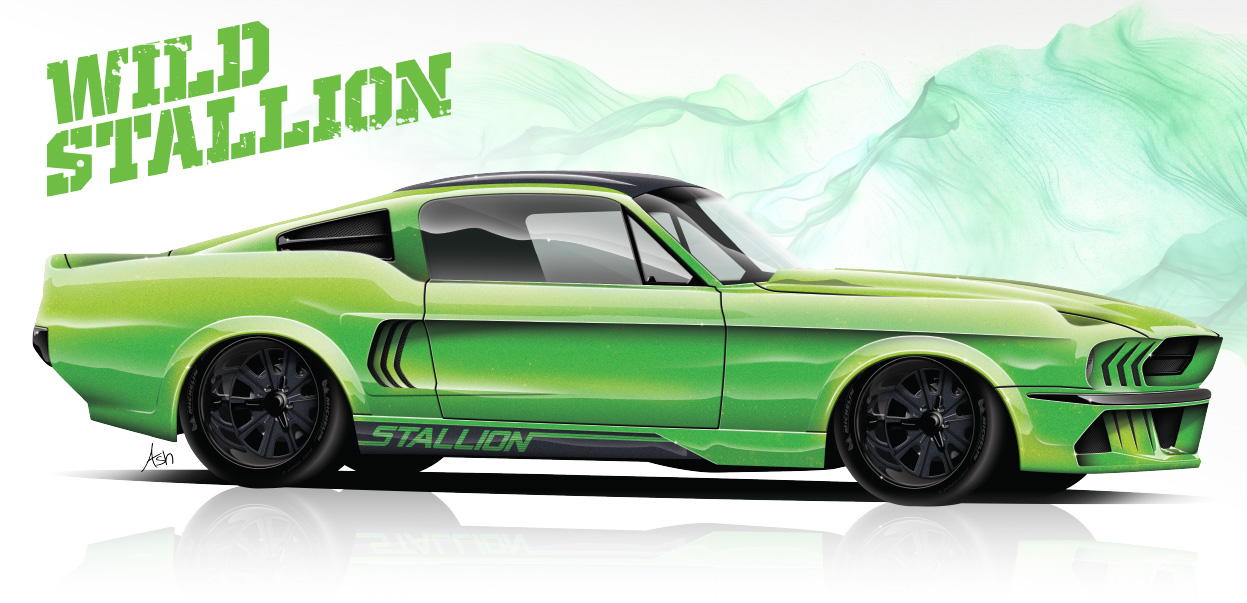It’s the age-old issue of being in the business of building custom cars — you need to do things to the customer’s requirements. Sure, you can influence them or give advice, but, at the end of the day, they’re the ones paying the bill.
Matamata Panelworks has earned a name as the go-to Mustang shop, and, despite building countless high-end vehicles, the team have plenty more ideas that they’d like to put into practice. The ideal thing for them would be to find a customer willing to own the car but let them build it entirely their way. If said customer showed up today with an open chequebook and gave them carte blanche to build the car of their dreams, this would essentially be it.

Starting with a ’67 Mustang, countless hours would go into the custom-metalwork side of the build. While many parts would be obvious at first glance, some would not. The obvious bits would include raising the rear haunches by two inches, tapering back to the stock-height tail panel but including a duck-tail spoiler. The custom side skirts would have the vehicle’s name recessed into them, while the entire front end would be custom built to match.
Flush-mounted Eleanor-style headlights would sit next to a 2017 Mustang grille, with the edges built to blend the new with the old. That new and old mix would continue up the bonnet, where the current-generation swage lines would be built in — a feature that would be custom-replicated on the roof. The front guards would also get a higher peak, while the roof would get the opposite, losing its gutters at the same time as the screens would be flush mounted.
The choice of engine would be up to the owner — well, unless the owner left that one to the Panelworks team, too. However, the choice of wheels would be predetermined — Factory Five Halibrand-style wheels sprayed in the same two-tone as the main body.
Of course, no Panelworks build would be complete without upgraded suspension and brakes, although those details could be worked out later. But the master cylinders would definitely be hidden away in a smoothed engine bay, and the rear end devoid of any leaf springs.
Would you let the Panelworks team loose to build this? We sure hope someone does!
Doing It Yourself – LVVTA Opinion
We’ve seen enough of Matamata Panelworks’ creations over the years to know that the team’s work is about as good as it gets with pony-car body mods. For those of you who might consider taking on a challenge like this yourself, however, the main advice would be to use best-industry-practice panel-fabrication techniques, and to reinstate any strength that may be lost when cutting and joining panels, especially where they form a critical part of the vehicle structure, such as around seat-belt mounts, sills, drip-rail removal, or suspension mounting points.
Modification to headlights is usually quite straightforward — just make sure that they’re properly mounted, and that the lights you plan to use have the correct standards compliance. A list of the approved lighting standards and requirements is available in both the LVV Lighting Equipment Standard and the Lighting Equipment chapter in The New Zealand Car Construction Manual.
Moving the brake master cylinder and booster off the firewall on early Mustangs and Falcons is relatively easy using an aftermarket under-dash booster assembly such as the type-approved RRS Stealth unit. Just make sure you’re able to access the fluid reservoir, so that you can check and fill the brake fluid.
Getting rid of the leaf-spring rear end isn’t overly complicated for a fabricator with suspension-set-up experience, but, while there’s loads of useful information on four-bar and coilover set-ups in The New Zealand Car Construction Manual, it’s probably not really a job for a beginner.
As with any project, being in regular contact with your LVV certifier and having the relevant technical requirements close-by help to minimize the chance of getting anything wrong. All of the LVV Standards are free of charge to download from the LVVTA website, and the manual can be purchased in hard-copy or electronic format, depending on your preference.
Your thoughts on last month’s Deluxe Sleeper concept:
![05 May - NZV8 146 [CMYK].jpg](https://nzv8.co.nz/wp-content/uploads/2023/03/05May-NZV81465BCMYK5D.jpg)
Kris Moffatt: This appeals to me big time. Classic ’50s artwork, modern day driving dynamics, and enough power to make a mess of anyone’s trousers. What’s not to love about this? The patina has to be saved as well!
Bradley John Tucker: Mean




